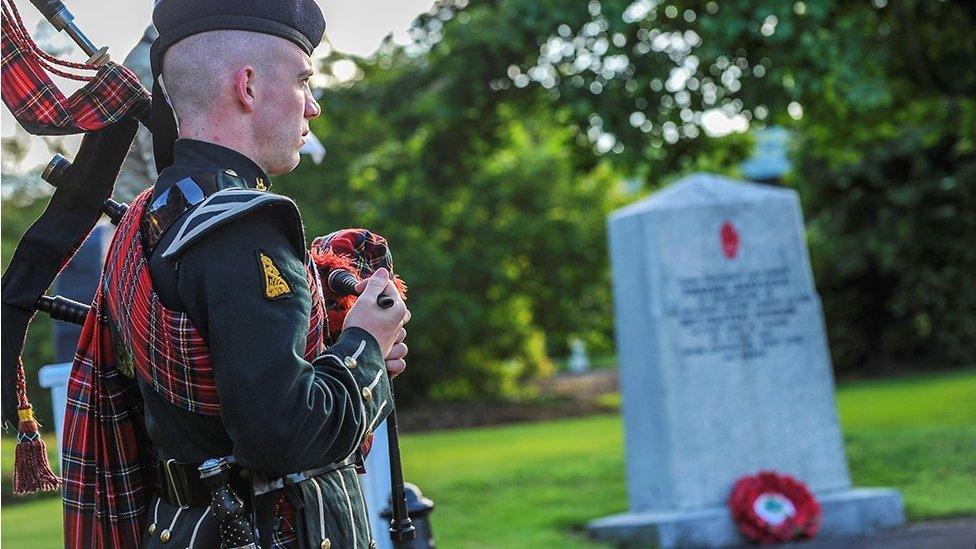Racing through Flanders Fields
- Published
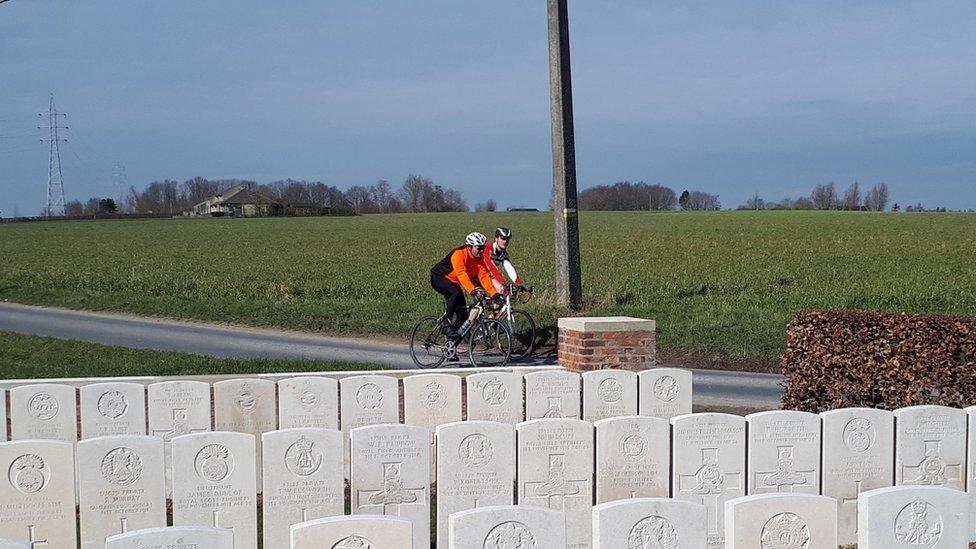
Sportive riders in the West Flanders flatlands
Cyclists spinning along country lanes are a common sight in Belgium, a country that loves its bikes almost as much as it loves its strong beer and its chips with mayonnaise.
Out in West Flanders, where windmills and church towers dot the countryside, the flat polder land runs through the battlefields of World War One.
Turn a corner and a cemetery with ranks of white headstones will emerge unexpectedly from the landscape.
I recently travelled to Belgium to catch up with some world-class cycle racing on the centenary of the war's end.
It is not the first time that the connection between bikes and history has been made.
In 2015, one of the classic Belgian races, the Gent-Wevelgem, was renamed "Gent-Wevelgem - In Flanders Fields" in remembrance of those who lost their their lives there.
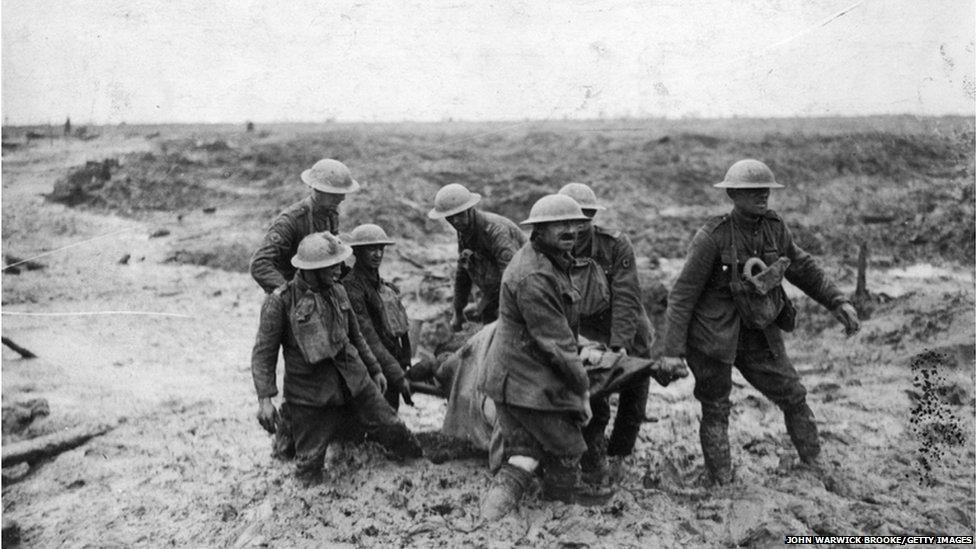
Stretcher bearers pictured in the Flanders mud
The race, which attracts some of the world's best cyclists, runs through what became known as the Ypres Salient, a bulge in the front line just a few miles wide.
Soldiers died in their hundreds of thousands there, most memorably at the Battle of Passchendaele in 1917.
Race organiser Griet Langedock explains that the battlefield connection distinguishes Gent-Wevelgem from the other Belgian classic races.
"We are riding the front lines and we can tell a story to make sure it's never forgotten," she says.

Passchendaele became a byword for suffering as heavy rains liquefied the mud of the Flanders battlefield
The race added a number of features: riders pass along the Menin Road where tanks advanced at walking pace in 1917 and through Hellfire Corner, once one of the most dangerous places on earth but now a suburban roundabout.
The route takes competitors through the Menin Gate, a memorial to the Missing in Ypres, along unpaved farm tracks called the Plugstreets and past a memorial to the Christmas Truce of 1914 when British and German soldiers are said to have played a football match in no-man's land.
"People want to see the race, but they also get the history," says Griet.

Canadian machine gunners take cover in shell holes at Passchendaele
The centrepiece of the race is the gruelling climb up the Kemmelberg, a steep laneway paved with cobbles rising to a 23% gradient.
The day before the race, I joined thousands of keen amateurs on a "sportive" ride along part of the route.
Perhaps, fortunately, I took a wrong turn at Ypres and missed a titanic struggle on the Kemmelberg.
I'd originally intended to watch the big race from the side of the road, but found my name pulled out of a hat with the offer of a ride in a race commissaire's car.

Driver Jan with our chariot for the day
For a cycling fan this was like winning a golden ticket and I shared the privilege with Ben, a Wiltshire bike buff who has attended every Gent-Wevelgem for the past 20 years.
Our driver, the affable Jan, who sells insurance for a living, assured us that he'd had to pass a special driving test for this job.
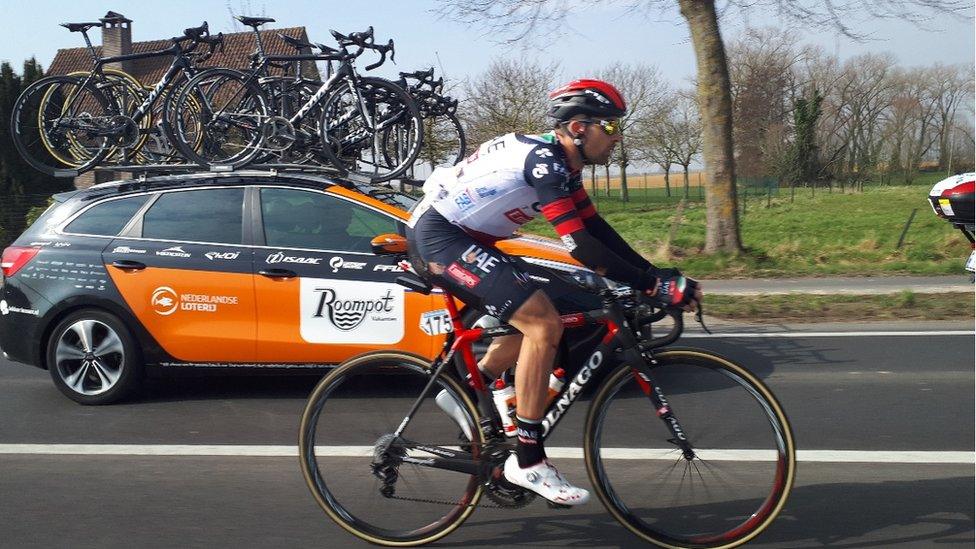
We had a ringside seat to see some of the world's top cyclists
We sped through the race, past team cars laden with spare bikes as commissaire Jean-Michel ticked off riders for minor infringements and made copious, illegible notes.
Then he'd swing around in his seat and pop up through the sunroof to keep an eye on the road behind.
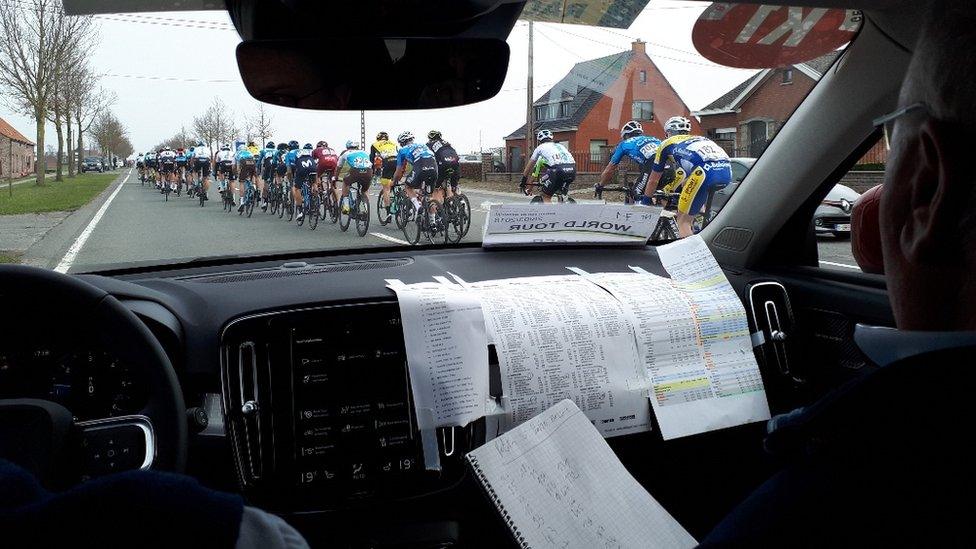
Jean-Michel keeping an eye out for misbehaviour in the peloton
"Race radio" blared out of a squawk box in excitable French informing teams when a cyclist needed a spare wheel or when riders collided in a "chute".
Jan swerved to avoid a policewoman who'd strayed into the middle of the road and cycling's charismatic world champion, Peter Sagan, wobbled into view directly ahead of us in his rainbow jersey.
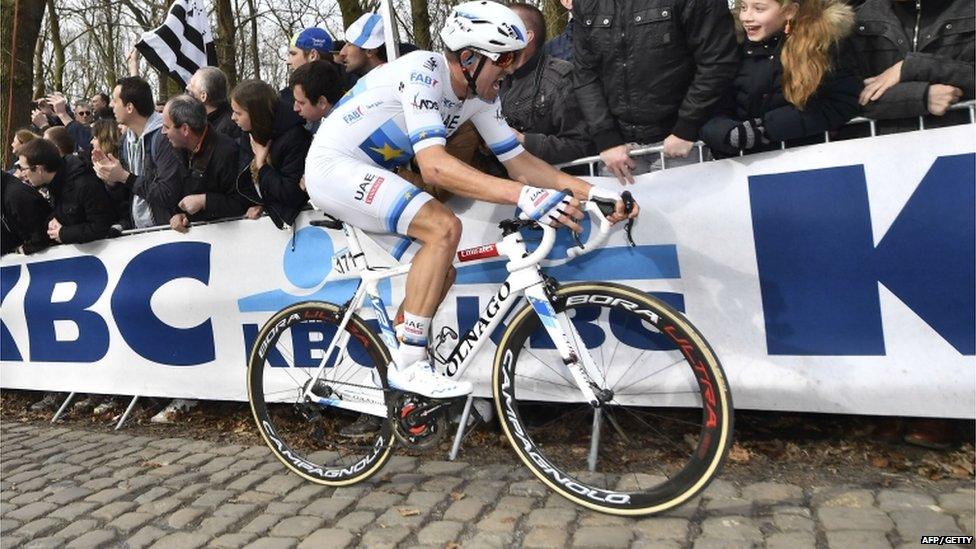
European champion Alexander Kristoff struggles up the cobbles of the Kemmelberg
"We'll need clean underpants after this," muttered Ben, as we tore across the cobbles at the Menin Gate and around Hellfire Corner at a rate of knots.
Sagan won the race by a hairsbreadth with some deft sprinting at the finish line.
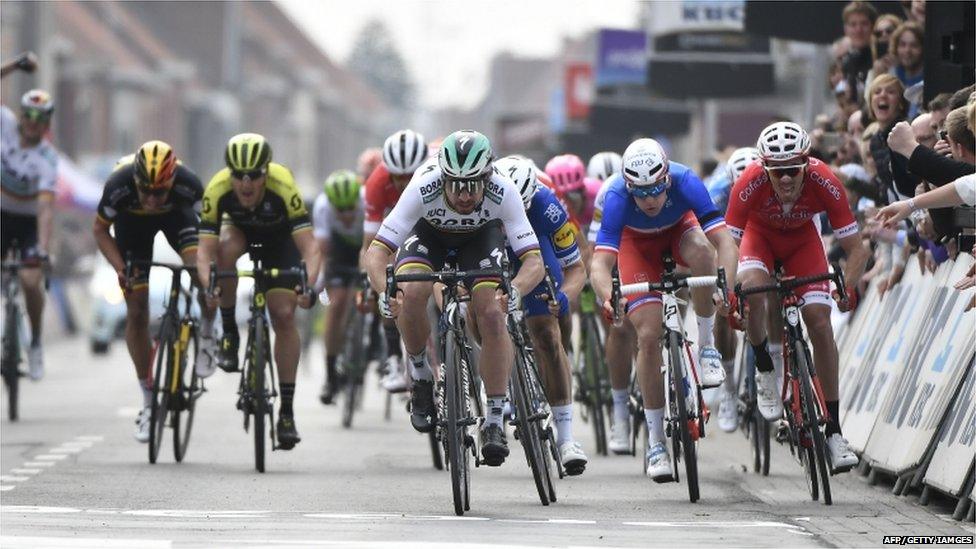
After 251km of hard riding, world champion Peter Sagan won by a split second
It had been an exhilarating five hours but somehow the remembrance aspect got lost in a blur.
Glancing out of the window we'd seen the Island of Ireland Peace Park in Messines.
A subsequent visit brought things back to earth - birds sang and a blustery wind hummed in the telegraph wires.

The Island of Ireland Peace Park was opened the same year as the Good Friday Agreement was signed
Soldiers of the 36th Ulster and 16th Irish Divisions, Protestants and Catholics, fought and died to capture the low ridge that affords a view for miles across the flatlands.
The park, with its replica of an ancient Irish round tower, was opened in 1998, the year of the Good Friday Agreement, by the Queen and Ireland's President Mary McAleese.

Poppies in memory of fallen Irish soldiers at the Peace Park
Many young soldiers from Australia and New Zealand also gave their lives in the Salient.
The New Zealand Cycling Corps suffered its heaviest losses of the war on the Kemmelberg and the Gent-Wevelgem organisers have made a special connection with the New Zealand Under-23 cycling team.
A trophy made from a cobble from the Kemmelberg, mounted on a piece of wood from the trench dug-out, is presented to the country's Under-23 cycling champion.
The Gent-Wevelgem race is just one of the big events in the annual Flanders Cycling Week but its connection with the war makes it unique and the organisers are determined to ensure the significance is never forgotten.
- Published17 June 2016
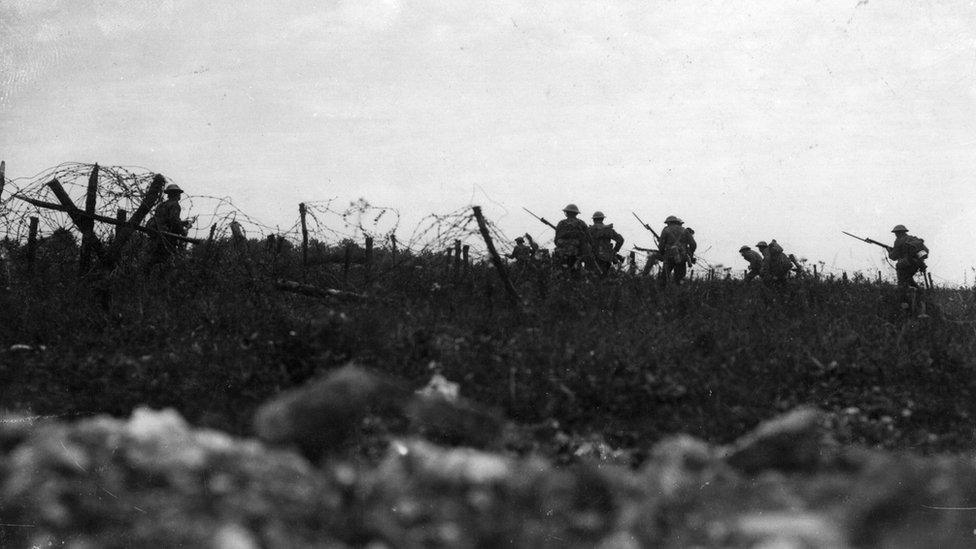
- Published1 July 2016
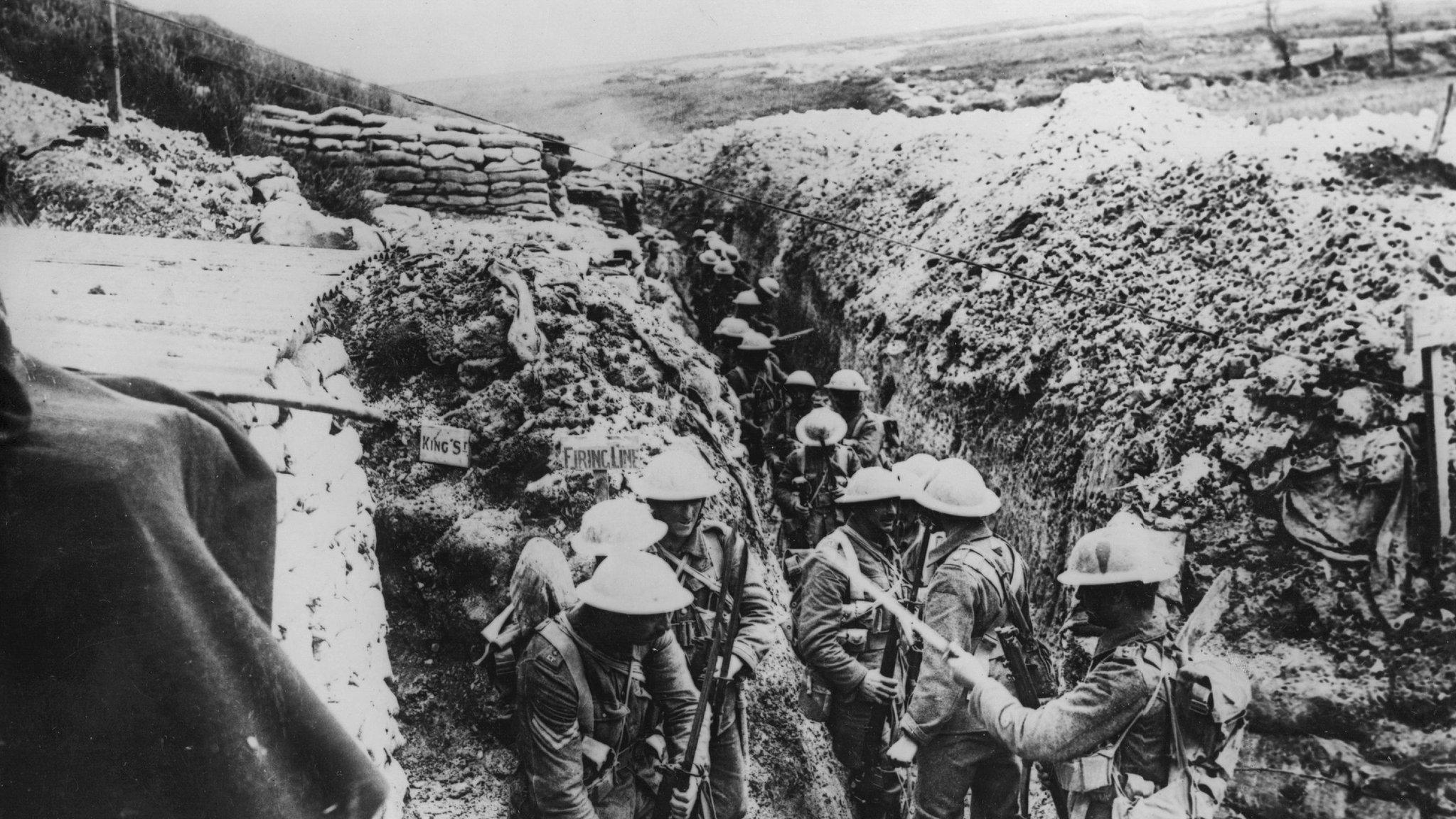
- Published1 July 2016
